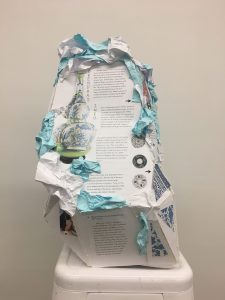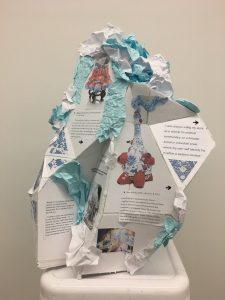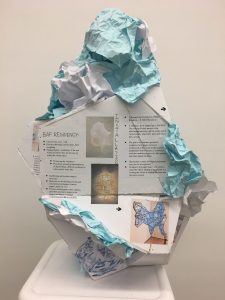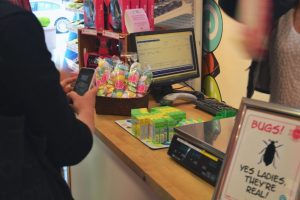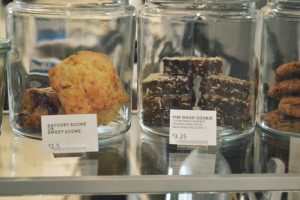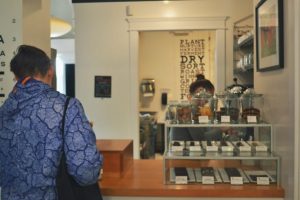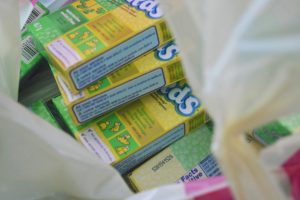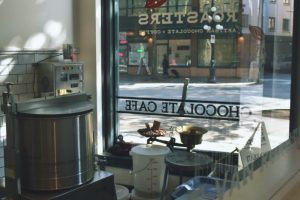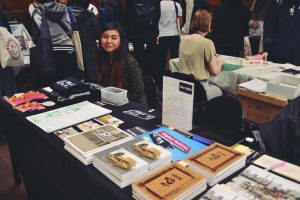Other Sights Project Outline:
Context:
This outline was due a month and a half ago. In working with Other Sights (OS), time has been the most prominent obstacle in the sense of this experience having underlying academic expectations. In one sense, this is vital – because without this class there would be no partnership, and its infrastructure is what facilitates mine and other peers’ opportunities to make connections in the art world. On the other hand, when this class outline is used with a group such as OS – which in virtue is the communication/scheduling of six individuals and myself, this infrastructure as flexible as it is, cannot accommodate OS’s pace.
In joining OS, I had been asked what I wanted to achieve and how I wanted to contribute to their existing dynamic. In retrospect, I am grateful for this premise because it allowed my absolute flexibility in the project I am now (started in mid-November) working on. However, I was not initially expecting this approach, and I felt as an individual coming into this group that I would be “assigned” or given a task/project/framework moving forward. In working this way, I needed time to interact with the group, such as attending the group meeting and events in order to decide where/how I wanted to situate myself. When you pair this with the fact that my partnership was a month later starting this term, time in this class has not been my friend. The group’s choice for me to decide what I wanted “to do” (I believe) was based in the fact that as an organization they are transitioning – and therefore had no obvious lane for me to take.
A pivotal moment in the partnership was when Barbara offered to meet with me regarding the history of OS as an organization. After doing so we brainstormed about how I could contribute to this, and she gave examples of how past students have done so. From this – and the obvious role as observer, the idea of an OS “portrait” came about. This was based on a combination of interests: 1. Barbara had mentioned interest in creating a publication where OS could be seen in a more holistic sense, and as an archive of their projects. 2. I mentioned my interest in both publications and book making.
What I haven’t told Barbara, or realized until I started is that working to represent others in my art making practice may have also been an allure. In another project, I combined my little brother’s drawings from when he was around seven years old with the journal entries of my partner when she was around the same age. The success of this project has given me confidence in working towards showing the interconnectedness and combination of OS members as both individuals and a collective body.
This leads to the outline of the “portrait” project. The process of this portrait involved me interviewing each member individually, and asking them all the same set of questions. In doing this, I am asking the members about themselves as individuals, how they view OS as a whole, as well as how they perceive other OS members. From these answers, I am hoping to evoke a compare/contrast set of answers that reveal the true essence and commonalities of OS. On the other hand, these questions also explore how although they are operating from project to project with a consensus attitude, how they as individuals are equally as important.
Time, again. Co-coordinating with members of OS to make time for these interviews has been a struggle, and unfortunately has decreased what I believe will be the final product of the “portrait” as it exists within the timeline of this semester.
Other Sights Project Outline:
Another Sight: Other Sights for artists projects, a book/publication style “portrait” of OS as an organization.
Part 1 – Portraits
Part 2 – Q+A
Part 3 – Collaborator Statements – omitted, I no longer will include this due to time constraints/re-consideration
Part 4 – Individual Project Insight
Part 5 – Map of projects
Each part will take form in a “mini book” that when viewed collectively will (hopefully) reflect OS as a whole
——————————————————————————————————————————-
Part 1:
Interview Procedure:
- I will ask each artist for a literal portrait of themselves.
- I will ask each member how they identify as a creative individual
During the interviews, I will ask one member about another in the following questions:
- If OS was a body what body part would member _____(ex. Barbara Cole describes Jen Weih)_____ be?
- How would you describe member ______( ex. Barbara Cole describes Jen Weih)_____’s persona/role in OS? (the member is the same person in both questions)
- I will ask the member I’m interviewing to draw the same member I asked them the two questions about (ex. Barbara Cole draws Jen Weih)
- I show the member being interviewed a series of colour swatches, and ask them to pick one colour from the selection.

Ex. Barbara picks one colour from each swatch (I show every artist the same 5 colour swatches)
- Every artist will be assigned one colour based on their choosing, (I show them multiple swatches to ensure I can assign every artist a different colour) even if they sometimes pick multiples.
This will be the basis for how I create literal portraits for the artists in a design similar to the following format example:
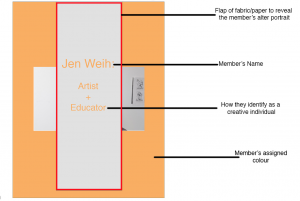
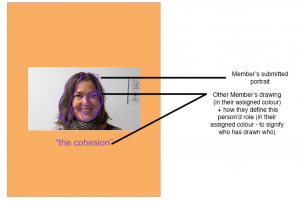
Colours explained:
The colours are used to signify which member has said/indicated what – and will be used throughout the rest of the publication to indicate who’s speaking. This also presents an element of chance, as I can’t choose who picks who colour – and if for example Jen’s colour may or may not aesthetically combine well with Barbara’s portrait of her that will be conveyed in Barbara’s colour. When reading quotes from interviews, using colour to indicate who’s speaking rather than name a person will read as a more cohesive opinion that represents the group as a whole – and the colour is the touch of individualism.
Part 2: Q+A
These questions are meant to compare/contrast and identify the ideological and value based similarities shared amongst OS, while simultaneously in the sense of a portrait conveying a larger understanding of OS as an organization.
- These are the questions I will be asking members of OS:
- How does OS define collaboration?
- How does OS define public art?
- How does OS’s projects reach members of the public who don’t intentionally engage in artistic discourse?
- *** Wildcard Scenario: If OS had unlimited resources, budget, and time – propose/describe an exhibition that would be held in a gallery context
Part 3: Individual Project Insight
As it pertains to the portrait, this section helps to acknowledge the work of OS as part of their identity while examining this in relation to other ideological questions.
- Can you give a synopsis of a project that you led at OS? What is a specific detail or insight to the project that an outsider may not know?
Part 4: Project Map
I will create an abstracted form of a map that (geographically) places all of the projects that OS has undertaken. Initial thoughts – whole punch a map in each place where a project has been, allowing for more projects to be added as OS continues in the future.
Timeline:
Given my late start, how hard it is/has been to individually co-ordinate with OS, and the pressure of other courses – I plan to have part 1, the literal portraits finished and ready to present at the end of class party on Dec. 5th. OS members have little knowledge of this project/how their answers are creating a dialogue and interaction with one another. I plan to show them part one, and present a document of the more textual work to them at an undetermined time which extends beyond this semester. Based on my conversations with Barbara this will not be a problem, and because the members do not know what to expect from me – I believe that taking this on as a personal project beyond this semester is the best fit.

